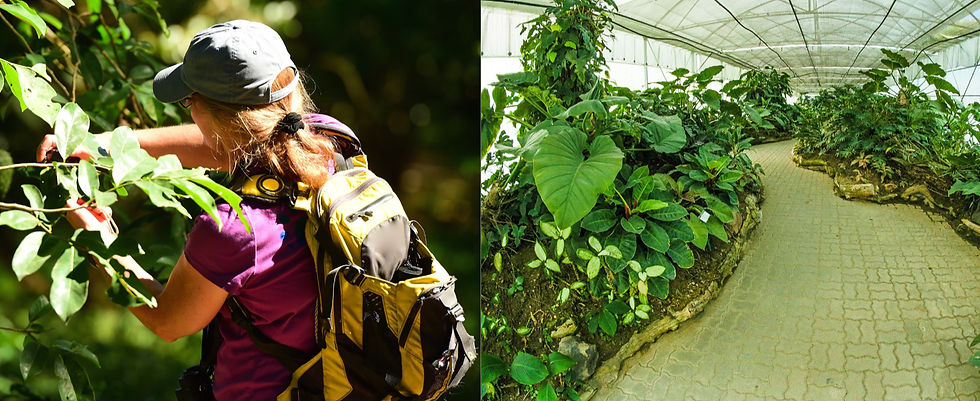Sampling: it all starts in the field
- luisamarins19
- Mar 26, 2024
- 2 min read
Updated: Mar 28, 2024
The production of any genome starts with a sample or, as scientists commonly refer to it, a specimen. A sample is a piece of the organism we wish to study- or, depending on the size of the organism, its whole body! From this sample, we are able to extract the DNA molecules that make up the genome.

Since in the European Reference Genome Atlas we are interested in studying the biodiversity of Europe, sampling usually requires going to the field to find and collect the organisms in their natural habitats. This step - also known as fieldwork - is one of the favourite activities for many biologists as it provides an opportunity to spend time in nature. In some specific cases and depending on how rare the species is, the sample might be obtained from botanical gardens, zoos or even museums - that’s one of the many reasons these institutions are so central to biodiversity research: they not only guarantee fun weekend trips, but also play a role in storing and safeguard the genetic heritage of our planet.

In general, biologists go to the field to find the species they wish to study. In some cases, however, it is more practical to obtain specimens from botanical or zoological gardens collections.
Sequencing the entire DNA of an individual requires fresh, high-quality samples. For this reason, sampling can be one of the most challenging steps in the whole process of generating a genome. When we assemble a reference genome, the goal is to accurately uncover the true genome that exists inside each cell. Depending on the conditions of storage and transport after sampling, the DNA can start to degrade, meaning that the long strings of DNA will slowly be fragmented into smaller pieces. Assembling a genome is like putting together a puzzle: the tinier the pieces, the more difficult it becomes. That’s why fresh samples are so important, so that we can obtain high quality DNA that will later ease our work when placing the pieces back together.
Check the glossary to explore the concepts highlighted in bold and many others!

コメント